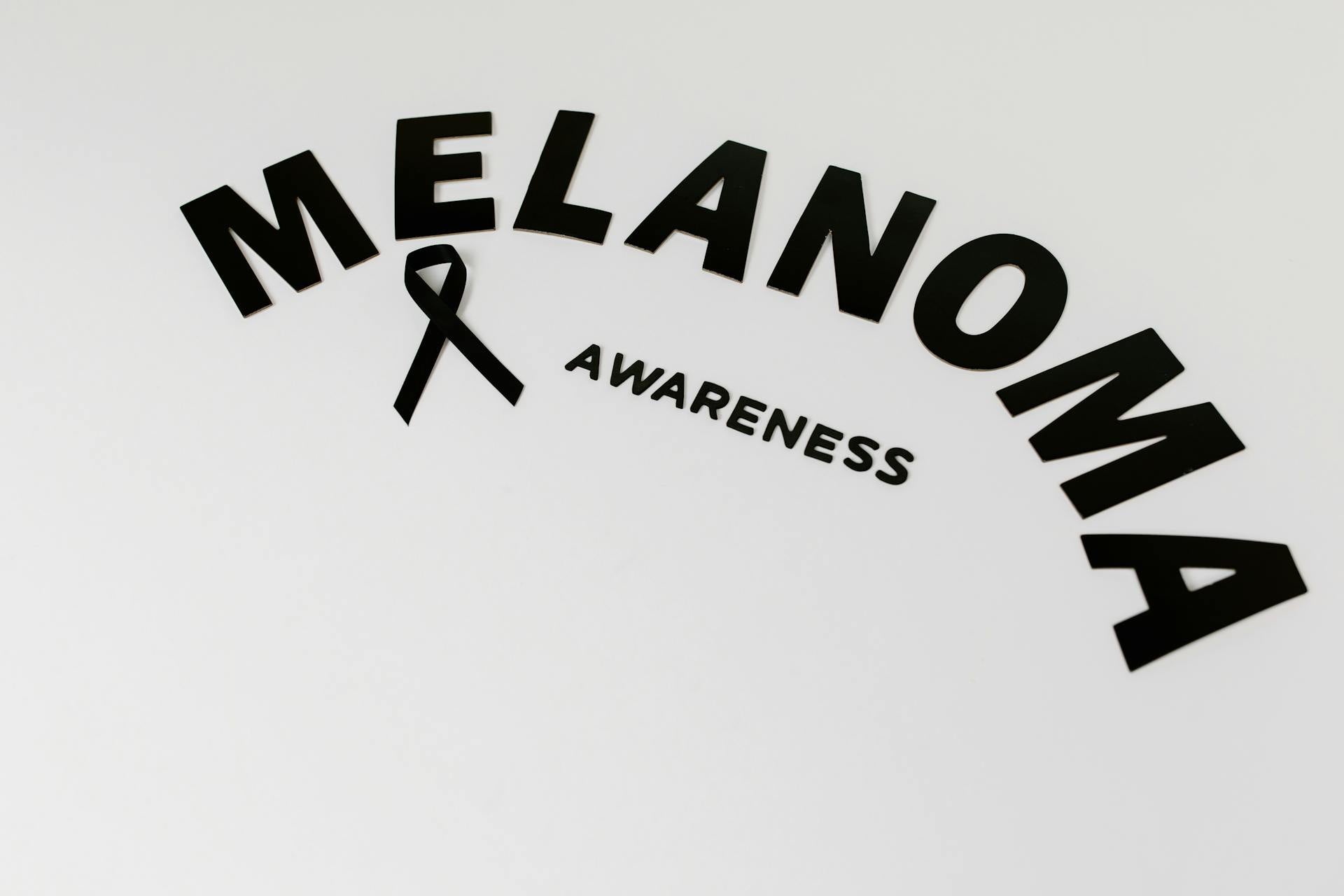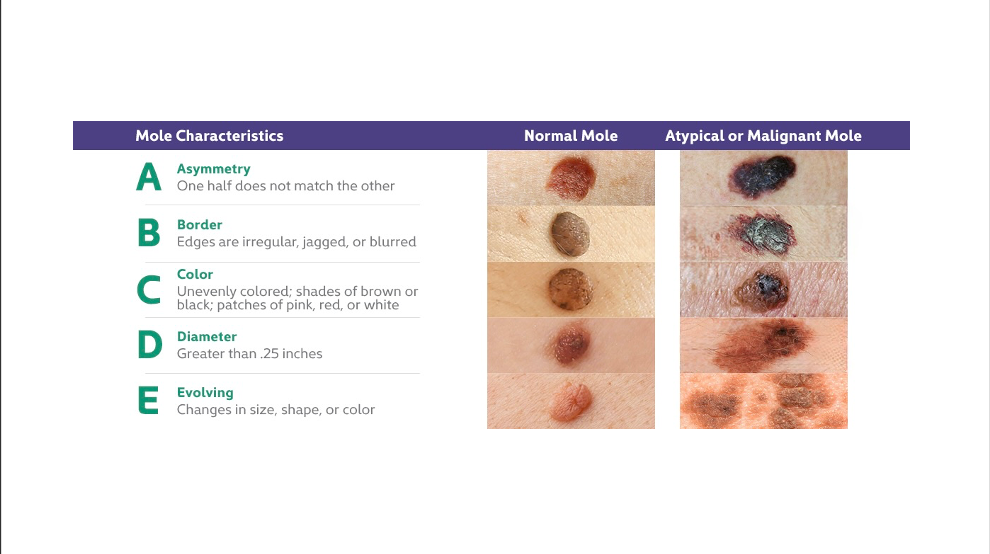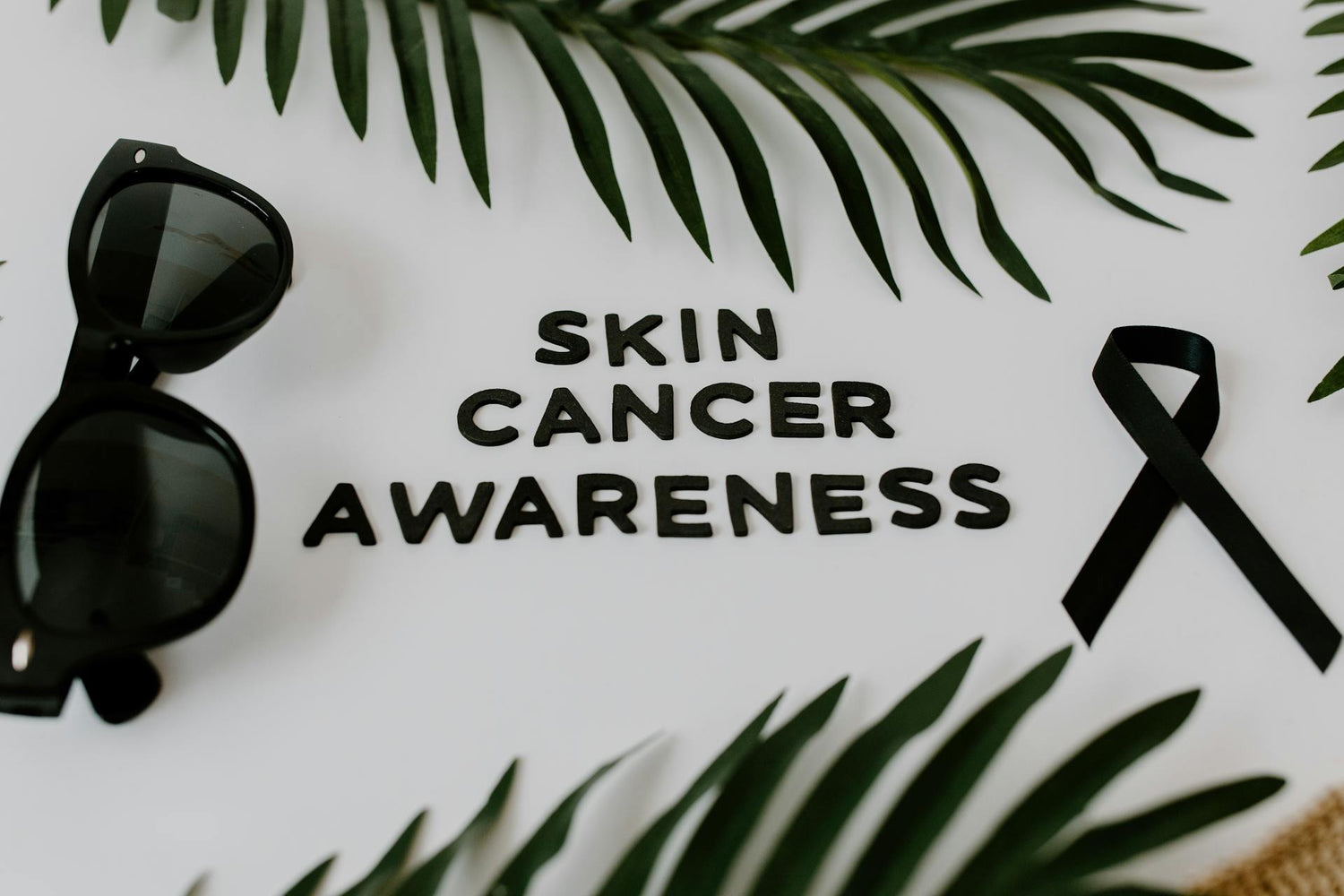This page is for general information only. Haus of Ästhetik Ltd does not provide diagnosis, investigation, or treatment of skin cancer. If you are concerned about a mole or skin lesion, seek advice from your GP or dermatologist immediately.

Understanding Melanoma:
A Critical Guide to Skin Cancer
Melanoma is a serious form of skin cancer that originates in melanocytes, the cells responsible for producing melanin, the pigment that gives skin its color. While less common than other skin cancers, melanoma is more likely to grow and spread if not detected early.

What Is Melanoma?
Melanoma develops when melanocytes become cancerous. It can occur anywhere on the body but is most commonly found on areas exposed to the sun, such as the back, legs, arms, and face. However, it can also appear in areas not typically exposed to sunlight, including the soles of the feet, palms of the hands, and under the nails.
Recognising Melanoma:
The ABCDE Rule
Early detection of melanoma significantly increases the chances of successful treatment. The ABCDE rule is a helpful guide for identifying suspicious moles or skin lesions:
- A – Asymmetry: One half of the mole doesn’t match the other half.
- B – Border: Edges are irregular, ragged, notched, or blurred.
- C – Color: Uneven color with shades of black, brown, tan, and possibly white, red, or blue.
- D – Diameter: The spot is larger than 6mm across (about the size of a pencil eraser), although melanomas can sometimes be smaller.
- E – Evolving: The mole is changing in size, shape, or colour.

The Facts:
-
Risk Factors for Melanoma:
Several factors can increase the risk of developing melanoma:
- UV Exposure: Excessive exposure to ultraviolet (UV) radiation from the sun or tanning beds.
- Skin Type: Fair skin, freckling, and light hair increase susceptibility.
- Moles: Having many moles or unusual moles.
- Family History: A family history of melanoma.
- Weakened Immune System: Conditions or medications that suppress the immune system.
-
Diagnosis and Staging:
If melanoma is suspected, a dermatologist will perform a skin examination and may take a biopsy of the lesion. If melanoma is confirmed, further tests may be conducted to determine the stage of the cancer, which ranges from Stage 0 (in situ) to Stage IV (advanced melanoma with spread to other organs).
-
Treatment Options:
Treatment depends on the stage and location of the melanoma:
- Surgical Removal: The primary treatment for early-stage melanoma.
- Immunotherapy: Uses the body’s immune system to fight cancer cells.
- Targeted Therapy: Drugs that target specific genetic mutations in melanoma cells.
- Radiation Therapy: May be used in certain situations, such as when surgery isn’t an option.
- Chemotherapy: Less commonly used but may be considered in specific cases.
-
Prognosis:
The prognosis for melanoma depends on the stage at diagnosis:
- Early Detection: When caught early, melanoma is highly treatable, with a 5-year survival rate of around 99% for Stage I.
- Advanced Stages: Survival rates decrease as the cancer progresses, but treatments have improved outcomes significantly in recent years.
-
Prevention and Self-Examination:
Preventive measures include:
- Sun Protection: Use broad-spectrum sunscreen with an SPF of 30 or higher, wear protective clothing, and seek shade during peak sun hours.
- Avoid Tanning Beds: UV light from tanning beds can increase melanoma risk.
- Regular Skin Checks: Perform monthly self-examinations and schedule annual skin exams with a healthcare provider.
-
When to Seek Medical Advice:
Consult a healthcare professional if you notice:
- A new mole or skin lesion.
- Changes in an existing mole’s size, shape, or color.
- A mole that bleeds, itches, or becomes painful.
- A sore that doesn’t heal.

SPF's, Sun Cream's
-
Tricology Lotion
Vendor:MesoesteticRegular price £55.95 GBPRegular priceUnit price / per -
Mesoestetic Mesoprotech PLE Gummies
Vendor:MesoesteticRegular price £49.95 GBPRegular priceUnit price / per -
Mesoestetic Mesoprotech Sun Stick 100 SPF50+
Vendor:MesoesteticRegular price £29.95 GBPRegular priceUnit price / per -
Mesoestetic Mesoprotech Mineral Fluid SPF 50+
Vendor:MesoesteticRegular price £47.95 GBPRegular priceUnit price / per







